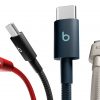New research from the Consumer Electronics Association (CEA) found consumers are relying less and less on over-the-air TV signals and few U.S. households have interest in cancelling their pay-TV service.
In a phone study of 1,256 adults conducted in December 2010, CEA found the number of homes that rely on over-the-air signals for TV programming plummeted last year to eight percent of all U.S. households with TVs. Over-the-air TV viewing has been steadily declining since 2005, according to CEA’s research. Only about 9 million (8%) out of 119 million U.S. Households are only using an antenna to watch over-the-air (OTA) TV. Just 5 million (4%) don’t own a TV at all.
“Over-the-air TV was once the defining distribution platform,” said Gary Shapiro, CEA president and CEO. “But using huge swaths of wireless spectrum to deliver TV to homes no longer makes economic sense. Congress should pass legislation to allow for incentive auctions so free market dynamics can find the best purposes for underused broadcast spectrum, such as wireless broadband.”
The study also found that pay-TV providers face little threat of their customers cancelling their service in favor of over-the-air broadcast TV and Internet video. Seventy-six percent of respondents said they were unlikely or very unlikely to cancel pay-TV service. By contrast, just 10 percent of households said they were likely or very likely to cancel pay-TV service.
“Contrary to the National Association of Broadcasters’ assertions, antenna sales are falling and cord-cutters are not shifting to over-the-air television but rather to the Internet. The only cord being cut these days is the one to the antenna,” Shapiro said. “It’s time we accept this shift away from over-the-air TV as an irrevocable fact of the TV market. The numbers tell the story.”
While the survey found consumers were unwilling to cancel pay-TV service, more and more are viewing Internet video from Hulu, Netflix and others on their TVs, which is still the dominant device to watch video content. Nevertheless, computers, car video devices and smartphones are increasingly being used to watch video content.
Consumers are quickly adopting smartphones and alternative display devices such as tablet PCs, and wireless broadband data use is exploding. CEA estimates U.S. households owning a smartphone is going to skyrocket from 33 percent in 2010 to 45 percent in 2012.
About CEA:
The Consumer Electronics Association (CEA) is the preeminent trade association promoting growth in the $186 billion U.S. consumer electronics industry. More than 2,000 companies enjoy the benefits of CEA membership, including legislative advocacy, market research, technical training and education, industry promotion, standards development and the fostering of business and strategic relationships. CEA also owns and produces the International CES — The Global Stage for Innovation. All profits from CES are reinvested into CEA’s industry services.






























